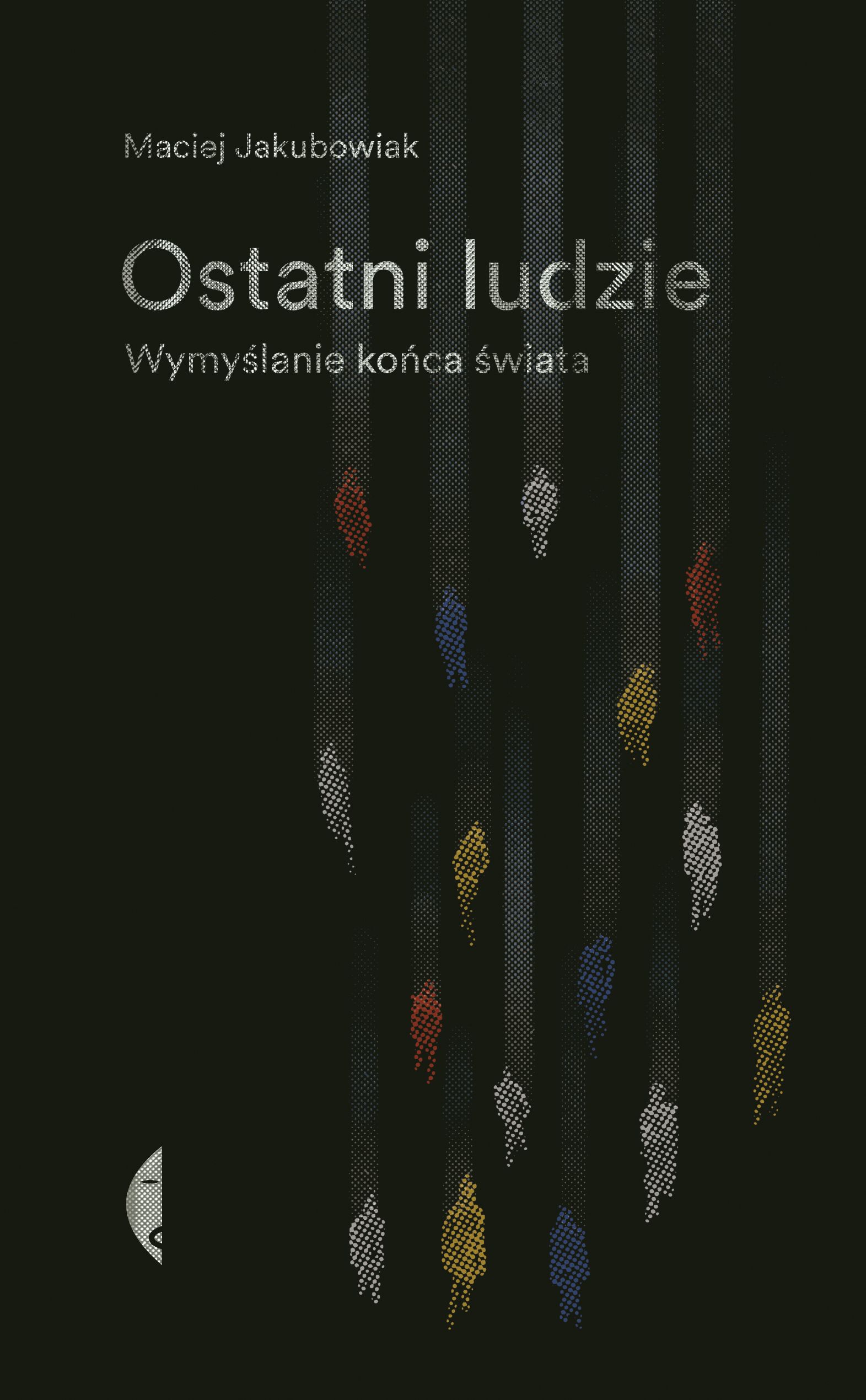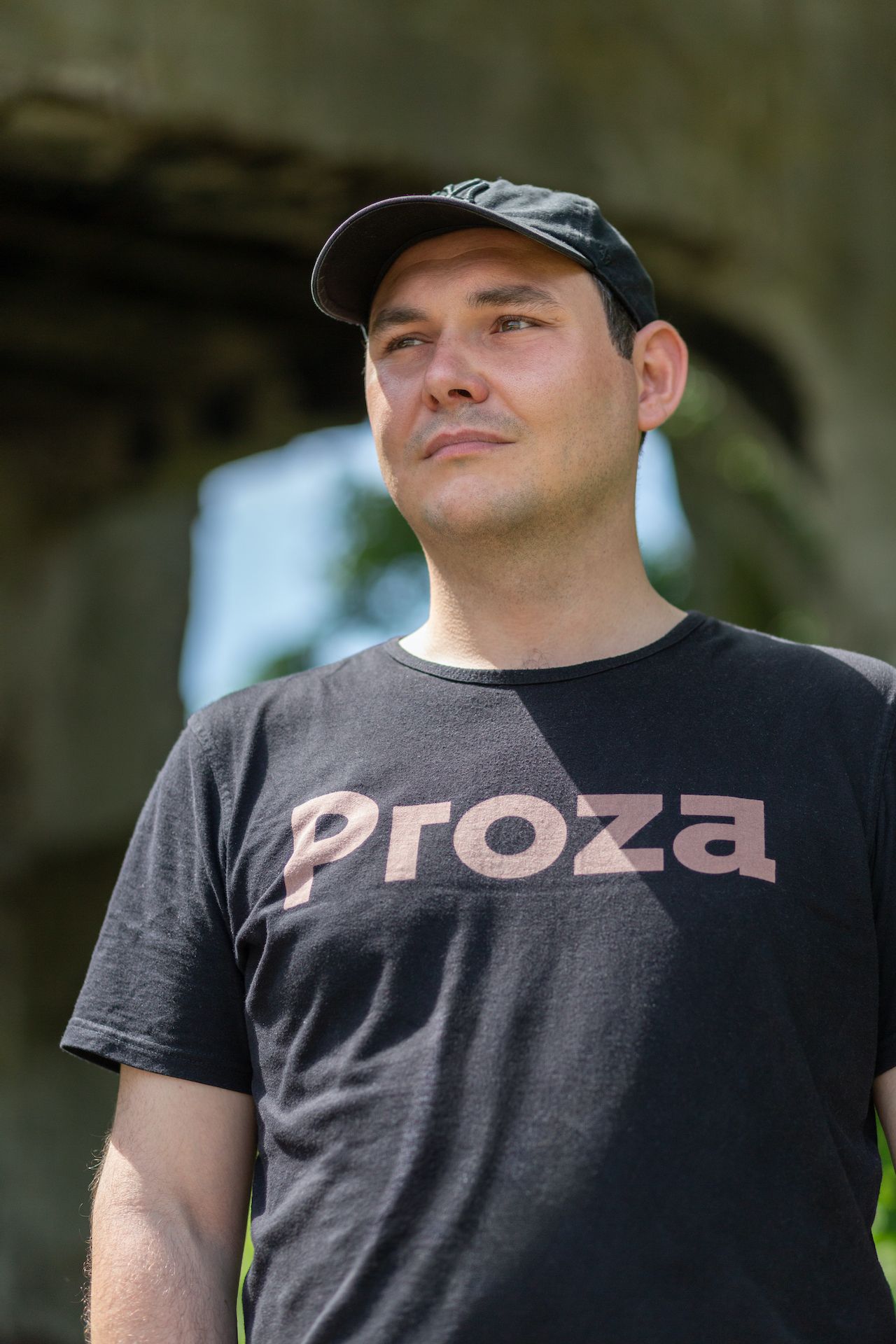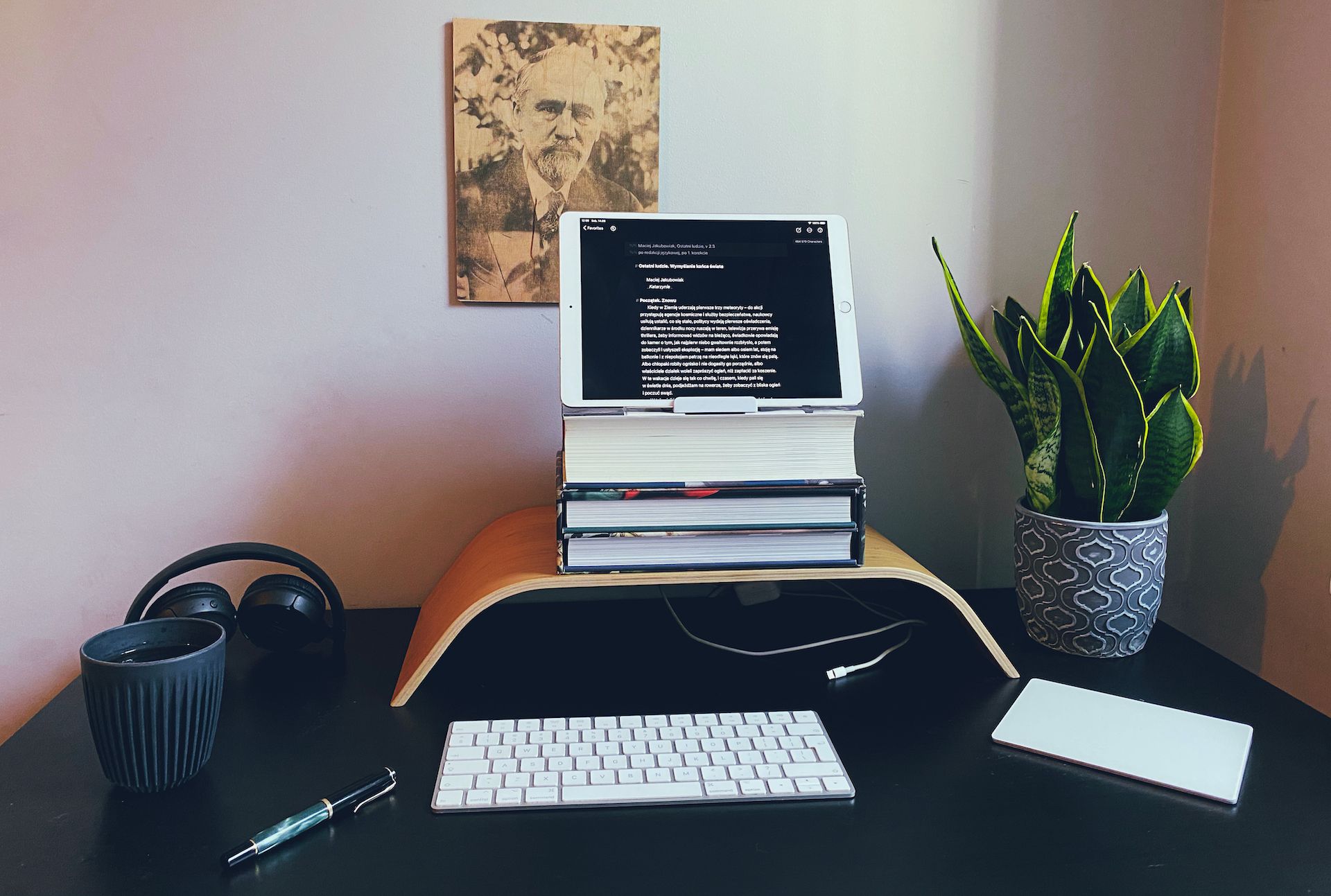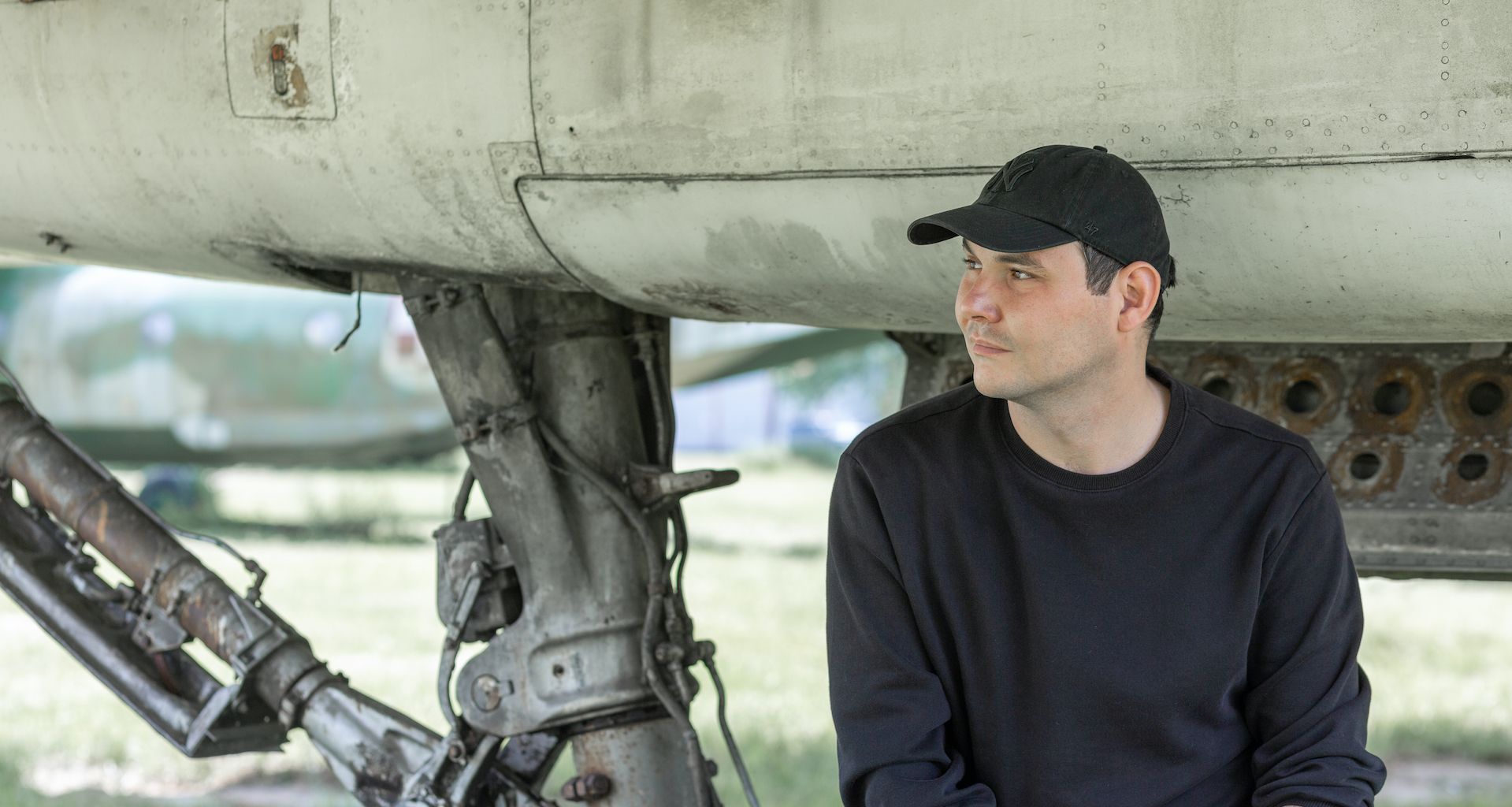When Polish author, essayist and editor Maciej Jakubowiak started working on his book “Ostatni ludzie. Wymyślanie końca świata” (“The Last People. Inventing the End of the World”) in 2019, there wasn’t any Corona pandemic in sight. However, the narrative of the forthcoming apocalypse was already in vogue, nourished by our contemporary fears.
In our interview, Maciej talks about why the old religious story of a world with beginning and end is so attractive and why the climate crisis is a massive challenge but doesn’t equal doom. He also explains how Ulysses helps him write — and to avoid avoiding writing.
Please tell us something about you and your professional background.
I’m an essayist (I quite like this word, it means I’m still trying to figure out what it is that I write) and a literary critic. I work as an editor in a Polish cultural magazine Dwutygodnik.com, where I’m responsible for literary and media sections. I have a PhD in literary studies, and for ten years I’ve also been working as a lecturer, but this year I closed this path of my career. Additionally, since this year, I’ve been a member of a jury of the Warsaw Literary Prize.
Basically, my whole professional life is about reading and writing, and it’s something I’ve dreamed about since I was a teenager. I somehow manage to have a private life as well. I live with my wife, daughter and two adopted dogs in Kraków.
You’ve recently published your second book “The Last People. Inventing the End of the World” with a leading Polish publishing house. Would you please tell us what it is about?
In the book, I’m trying to understand (rather than explain) why we are so insistent in talking, thinking about, and imagining the end of the world. For a long time, I thought it was just a bad joke (remember all those movies about the 2012 apocalypse?), but recently I noticed that more and more people talk about it rather seriously. Also, media headlines and scientific reports have revived this rhetoric. So I started to think: why is this story so attractive that we keep getting back to it? What do we need it for? And I did what I’m best at: read a lot of books, watched movies and TV shows, and went through masses of internet memes. “The Last People” is an effect of this deep-dive into contemporary culture.
It’s not a book about historical apocalypses (with one important exception) nor about the post-apocalyptic genre (like “Mad Max” etc.). It’s rather a story of the pre-apocalyptic condition in which we live. In the first part of the book (it’s called “Plagues”, I had quite a lot of fun in coming up with headers), I write about contemporary fears which we stuff into the old narrative of the end of the world: about climate crisis, technological and demographic phobias, and contemporary images of war. In the second part (“Signs”), I’m looking for consequences of the fact that the only thing we see in front of us is doom: nostalgic trends in culture, pre-apocalyptic prepping, affirmation of failure. Sometimes people are ready to do a lot to confirm their ideas, so thinking about the end of the world may be a self-fulfilling prophecy.
I started working on the book at the beginning of 2019, so you may imagine how surprised I was when the pandemic unraveled. Previously, I even had a plan to write a chapter about super bacterias. But eventually, I didn’t want to write another book about the coronavirus, and I came up with a different take on the subject: I wrote about a global pandemic, but a fictional one, invented more than 200 years ago. Although, it’s not that different from what we’re experiencing today.

So, after all the research you’ve done, where do you believe our desire to imagine the end of the world originates?
It’s an old religious story, of course, about a world that has its beginning and, as a consequence, it will have its end. What is interesting is that we still use this narrative in non-religious, and sometimes even anti-religious, contexts, for example, when we talk about progress, things getting better and so on. We like this narrative so much because it’s useful. It helps us to understand complicated stories by suggesting that their meaning is somehow revealed at the end. Like in a love story which can be twisted and complicated, but eventually it is all about one question: were they together at the end?
I think that precisely for this reason we started to use apocalyptic narrative to discuss the climate crisis: it’s a huge, highly complicated problem with many scenarios and potential outcomes, but when we say that it’s about the world coming to its end, well, then the whole story is getting easy to understand. And that’s another reason: that things may get so complicated that we may want to get rid of them. Imagine a tangled shoelace: at first, you will try to untangle it, but if it takes too much time, you will only want to tear it and buy a new one. Or, to use an example that may appeal to developers: imagine a messy code inherited from several previous versions of an app developed by different teams — at some point, it will be just easier to start from scratch.
Sure, our limits of patience can vary. If the apocalypse is making a massive come back in political rhetorics, that’s probably because our ideas of an acceptable world are getting so limited that we simply can’t imagine how other people’s choices could fit into them, so when an election goes against our ideas, we tend to talk about the end of the world. And sometimes we talk about it because we are looking forward to some kind of justice (religious, social, you name it), and we believe that at the end the righteous will be rewarded and the evil will find their punishment. So, as you can see, this ancient, relatively simple story can be used for many purposes, and probably that’s why it is so attractive, even after thousands of false alarms raised over the centuries.
Isn’t the climate crisis a different story from the false alarms of the past to which you refer? The insights about human-made climate change are backed by science, we have already come to feel the consequences, and still we don’t seem to be able to make the necessary changes to our economics, lifestyle and politics to avoid making our planet uninhabitable.
There’s no doubt that the climate crisis is a severe challenge, probably the greatest challenge we have ever faced as humanity. But still, it’s not a story about the end of the world, it’s a story about climate change and its vast consequences spread unevenly around the globe.
Actually, for a long time (and scientific research about climate change started more than a hundred years ago), it hadn’t even been a story; it had been an enormous package of scientific data which required big teams of specialists from many fields to make any sense of. That’s why it was so difficult for scientists to communicate the importance of climate studies (and for big energy companies to produce misinformation about it). Then, the “apocalypse’’ came, that is, we started to use the well-known story about a potential end of the world as a template which allowed us to not only explain the stakes of climate change, but also to emotionally push us to do something about it. (One example is the book “The Uninhabitable Earth” by David Wallace-Wells, the word “uninhabitable” you used reminded me of it.)
The climate crisis is a highly complicated problem, but when we say it's about the world coming to its end, the story is easy to understand.
But what we tend to forget is that the apocalyptic narrative has side-effects; well, they’re not strictly side-effects, they’re rather its regular features. One thing is that whenever we talk about the end of the world, we also say that it will not happen. The threat of apocalypse may be emotionally moving, but it also silently suggests that it is not that very serious. And the other thing is that it can also terrify us to an extent that we will do nothing. There’s a great movie, “First Reformed” (directed by Paul Schrader), which shows the possible effects of learning about climate change. It is also not a coincidence that many climate scientists suffer from so-called “climate depression”. I’m not saying that it was a bad decision to start talking about climate change as if it were the end of the world. It made an impact, and I truly hope that it will help us to change our attitude towards these issues. But there are additional consequences of this move, and they shape the culture we live in.

So, on one hand, we need the apocalyptic story about climate change to understand that the situation is serious. On the other hand, this story is so scary that it can paralyze our ability to do anything at all. It may be a bit off-topic, but how do you deal with that contradiction yourself in your everyday life?
That’s a tough question. On one hand, I’m terrified, especially since the consequences will also affect my daughter. On the other hand, I don’t feel I’m in a position to do something really significant about climate change. Sure, I recycle (but it addresses a different problem), I’m vegan (also for different reasons, but recently it became a part of a climate change agenda), I think about the environment in my consumer choices, I support politicians who treat the climate seriously, I participate in protests. Professionally I write and edit, so I can, and I do, write and publish texts about climate change. Even so, I also realize it’s not enough, so sometimes, that’s not easy to acknowledge but it’s true, I just try not to think about it and live my life.
And by the way, it’s not really off-topic. In the book, between strictly essayistic chapters, there are small pieces of literary prose in which I try to grasp the experience of a person living in an atmosphere of the imminent end. Big issues, like climate change, eventually have effects in small reactions of our bodies.
What are you referring to?
I’m thinking about this unspecified disorientation or weirdness we could feel in Europe when there was no winter between 2019 and 2020. Or the slight tightness in our stomachs when we thought about the fires in Australia and all the animals that lost their lives, and then we looked at our animal friends, and realized how vulnerable we all are. Or small electrical discharges we feel on the surface of the skin when people get too close during the pandemic. All these small fears which occupy our bodies for no apparent reason, they are all part of this story.
Please tell us how you proceeded with the research for the book.
Basically, I read and watched a lot, made tons of notes, then tried to make sense of them, and finally, I wrote the whole thing. Technically speaking, it all usually starts in Apple Books and PDF Viewer, where I read, make highlights, notes, and then export them as a text file and put them in a folder/group in Ulysses. Similarly, I gather ideas and sometimes ready sentences to be put somewhere, which I quickly save in Drafts and only from there export to Ulysses. It is still the best way to note things down without thinking where they should fit. So at first, it is all an intended chaos of thoughts, own and borrowed, living in their own group in Ulysses. But then comes the time for this magma to take shape. With this book, I used iThoughts and OmniOutliner, which helped me to understand where each element fits. It’s quite important for me to have a clear structure, or architecture, of a book. But this structure can completely change when the hardest, but also the most exciting, part of the work comes — writing. It’s not about transforming the ready outline into a readable text. Actually, the best ideas are born only then, as an effect of a clash between the gathered material, a mind trying to make sense of it, and forces of language which have their own requirements.
Writing is not about transforming the ready outline into a readable text. The best ideas are born only then.
Please give us some more insight into how you used Ulysses while writing and finishing the book.
At first, I created a group for the whole book and subgroups for every chapter, where I gathered notes, ideas etc. Sometime during the process, Ulysses introduced an option to distinguish between sheets and material sheets, and that became very useful when using group goals. Before that, I used a system of tags and a filter, which showed me how much of the text is already written. For the same reason, I was also using statistics to track my daily performance. I knew how long the book should be, and I was a little worried if I would manage to deliver, but eventually, I wrote 120 thousand characters more (which later shrank to 60 thousand, but still). Finally, I realized the thing that needed to be tracked was not the number of characters, but, more difficult to grasp, the “completeness” of the book.
That was quite an adventure, and a lot of experimenting. I wanted to use all the tools Ulysses provided, hoping they would do the job for me. Well, they didn’t (now, when working on new texts, I’m trying to simplify this process), but sure, they helped. Especially comments and attachments — they may seem like a small feature, but they’re the best.
Generally, writing is always about rewriting, making edits, and leaving things to be decided later. Sometimes when I wanted to erase a fragment which I wasn’t sure I would need anymore, I’d just leave it in the sidebar. I think Ulysses is so great because it adapts to an unreadiness of writing. There are three ways to make comments, two ways to preserve fragments which need to be deleted but may be useful in the future; there’s split and merge, material sheets, and more. It’s not about creating a final version right at the beginning. Even export/import seems to be designed with this in mind. When I finished the first version, I exported it as a DOCX to be able to work with editors, track changes, or make comments, but when the last version of the file was ready, I was able to import it back to Ulysses.

Could you also say a few words about your Ulysses workflow for short-form writing?
I work on shorter forms in a very similar way to how I write books. For each text, I create a group in Ulysses, gather materials and then write. I always like to have an outline or at least notes in an organized form, and after I finished working on the book, I started to use Ulysses also for outlining. So usually, I have a fullscreen Ulysses with a text and small Ulysses with notes in Slide View (did I mention I work on iPad?).
It’s important for me to have one place, that is, one app, where I do my most important work. When I’m there, I know what I’m doing, and for me, that is Ulysses: my go-to place for writing, researching, and outlining. I edit text for “Dwutygodnik”, the magazine I work for, in Pages, because I need to track changes and make comments, but I prepare articles for publication in Ulysses. When I was teaching at the university, I was able to produce simple presentations directly from Ulysses (I even created a PDF style for this purpose).
I also have a website, and I’m able to run it directly from Ulysses, through a synced folder in Dropbox and a small web service called asocialfolder.com (run privately by Michael Tofias, great guy), which takes markdown files I put into a folder and produces nice looking posts.
Ulysses is great because it adapts to an unreadiness of writing.
How did you find out about Ulysses?
Do you know how everyone who writes has their own way to avoid writing? Cleaning the apartment? Adjusting the font? Mine is searching for the best app to write. Well, it used to be. I heard about Ulysses a long time ago. For some time I’d been using Scrivener, then I jumped to iPad. I even tried Daedalus Touch at that time, but I fell in love with Editorial, it wasn’t only a text editor, it was a tool for creating your own tools. It was cool, but at some point I decided I needed something easier, more focused, and that was about the time when Ulysses arrived on iPad. So after long hesitation I moved all my work to Ulysses, and I’ve been a happy user since then. After all, it helped me to avoid “avoiding”, and that’s something.
Thanks for the interview!
